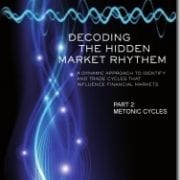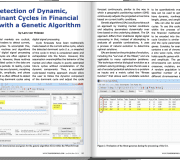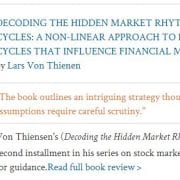Non-Linear Indicators – Cyclic Time Part 1
Why don’t we use the last n-bars of several years ago instead of using present last n-bars to derive the current condition?
“The progress of physics will to a large extent depend on the progress of non-linear mathematics.” Werner Heisenberg, Nobel Laureate 1932
In our “western thinking” and “left-brained” world, we always use the linear concept of time. It has become so “normal” in today’s world that no one questions it. However, awareness of the consequences can have a tremendous impact when building technical indicators and trading systems.
Today and in every charting application, technical analysis is placed in the logic of linear time. The important question now is: Why don’t we use the last n-bars of several years ago instead of using present last n-bars to derive the current condition? (That would be cyclical logic)
Why are the current last n-bars important for judging the current condition?
Nobody questions this since we believe that there is only one rule set for time: linear. Hence, all our indicators are based on the linear time concept of our “modern” world.
However, perhaps the bars n-days/years in the past related to a given cycle are more important to rate the present condition than the current last n-bars. This would correspond to the cyclical concept of time. Unfortunately, this idea is not available in any technical analysis platform for building technical indicators.
A cyclic module for automating the transformation from linear into cyclical time based on any one of a full range of cycles and indicators is available in the WhenToTrade platform. This module will be the first charting platform able to build non-linear predictive indicators and mechanical trading systems.
Please watch the following presentation on the power of non-linear indicators, Metonic Cycles and how to build them.
Please also read the follow-up article: “Cyclic Time Part 2“









Leave a Reply
Want to join the discussion?Feel free to contribute!